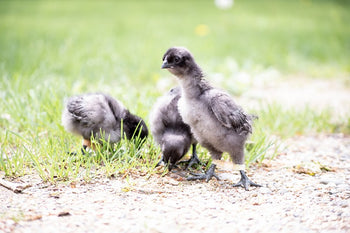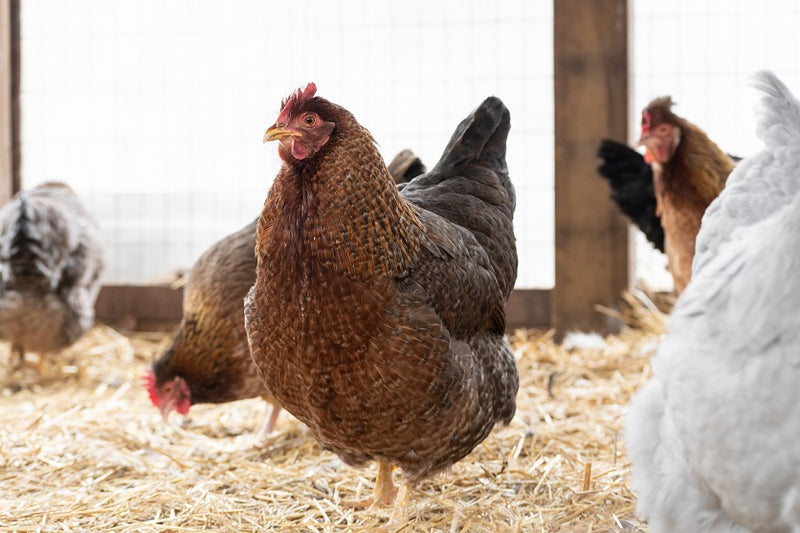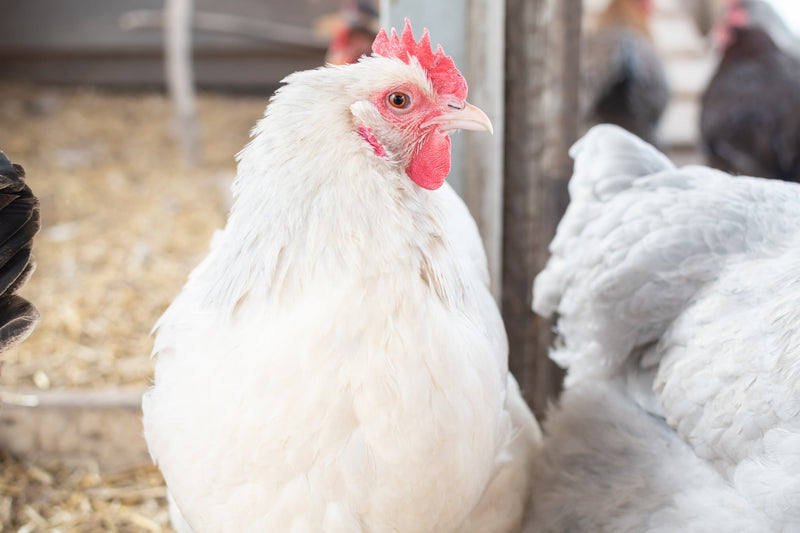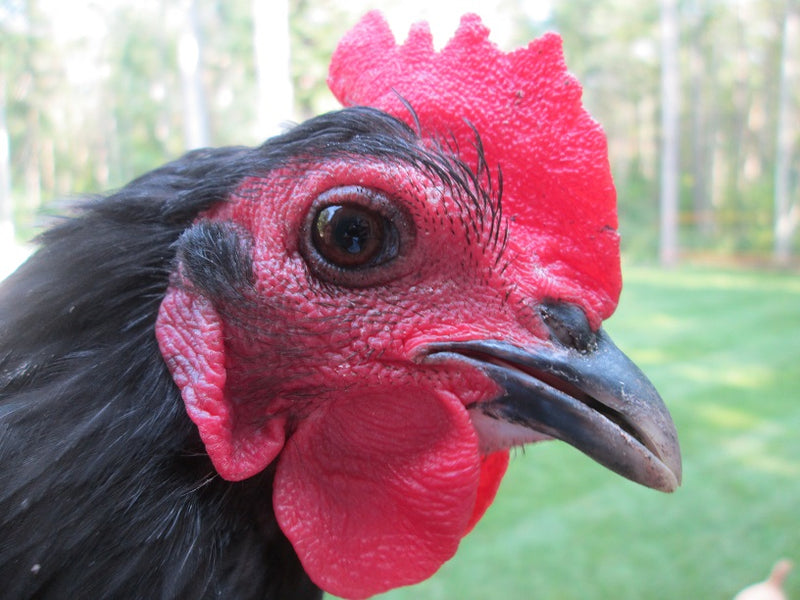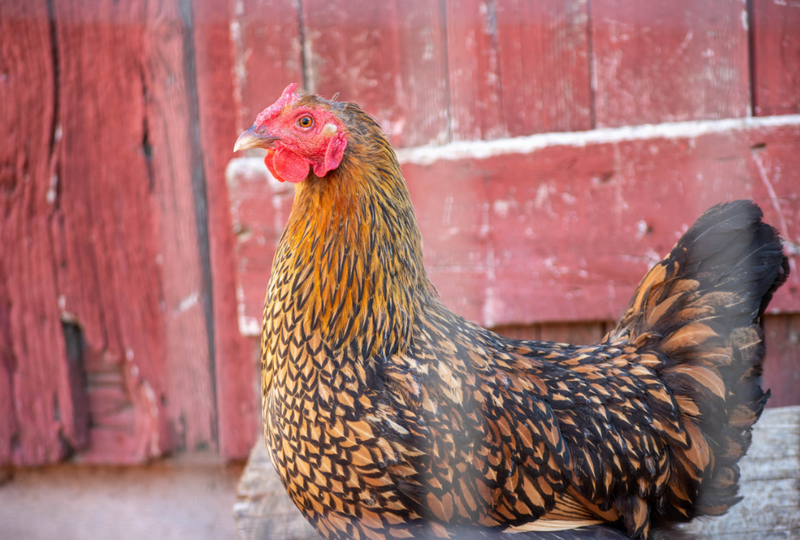Splay leg is a condition that affects young chicks and impedes their ability to walk properly. The condition can become fatal if not corrected while the chick is still young or if it’s not caught soon enough. Thankfully, a chick with splay leg can be treated and the condition can often be cured so that the chick matures into a healthy adult. Learning how to recognize splay leg in chicks can help you catch it soon enough to prevent the condition from becoming a serious health concern for your brood!
What is Splay Leg?

Splay leg is a development abnormality that can appear in newly hatched chicks. Splay leg is also called spraddle leg or splayed leg. The condition can be tricky to catch early on as it can progress at a slow enough rate that it does not become obvious for up to a week or two after the chick has hatched. Adult chickens are not affected unless they had splay leg as a chick and the condition was not corrected.
Splay leg can affect one or both legs of a chick, however it most commonly affects both legs at the same time. The condition got its name by the fact that it causes a chick’s legs to extend outwards from the chick’s body. It makes the chick look like it is doing the splits as both its legs ‘splay’ outwards. Cases of splay leg can range from mild to severe.
Mild cases of splay leg may cause the chick’s legs to simply be positioned wider apart than normal, making the chick walk with more of a waddle. Severe cases will cause the legs to splay all the way outwards and leave the chick unable to walk at all. Splay leg can start off mild and get more severe as the condition progresses without treatment so do not ignore early symptoms (even if mild)!
Splay leg, whether minor or severe, can inhibit a chick from walking properly. If a chick can’t move properly, it won’t be able to eat, drink, or get the nutrition it needs to survive and grow. Chicks whose movements are inhibited are also more prone to get trampled by other chicks in the brooder or be bullied by the other chicks.
Thankfully, splay leg can be corrected, and the condition will not be permanent if the splay leg is addressed while the chick is still young.
What Causes Splay Leg?
There can be several reasons why a chick hatches with splay or develops splay leg after hatching:
- Incubating conditions
- Hatching temperature
- Incubator & brooder flooring
- Breeder diet
Fluctuations in incubating conditions can cause developmental abnormalities in a chick before it hatches. Incubating temperatures that fluctuate throughout incubation or humidity levels that are too high can cause chicks to hatch with splay leg. Temperatures that are too high or low at hatch time can also cause splay leg.
Chicks can develop splay leg after they hatch if the incubator floor is too slippery for them to stand properly. This also applies to the brooder floor, which should be lined with a non-slip surface for new chicks. If the floor is slippery, the lack of traction can cause young chicks’ legs to slide out from under them and results in their muscles not developing properly to keep them in a normal standing position.
Breeder diet also plays a role in the health of the offspring. Chicks who hatch from eggs laid by a healthy breeding flock will be less likely to have developmental issues. Chickens used for breeding should be fed a complete diet rich in vitamins and minerals so that they can produce healthy offspring. Breeder diets that are insufficient in vitamin B can lead to chicks who hatch with malformities or deficiencies.
How to Fix Splay Leg in Chicks

A spraddle leg chick can be corrected if the condition is caught while the chick is still young and muscles are still developing. The sooner you can recognize the spraddle leg condition in a chick, the easier it will be to correct.
To correct splay leg, you need to provide the chick with leg stabilization during early growth. As the chick grows (which occurs on a daily basis), the muscles will develop into the correct position for the chick to stand and walk normally. The older a chick is when you start the treatment, the more painful it could potentially be for the chick as its muscles have already started to develop into the splay position.
The easiest way to provide leg stabilization for small chicks is by creating a loose hobble. You will need a material that can be secured around each leg and that will pull the legs gently together into the normal standing position. Vetwrap, Bandaids, rubber bands, and yarn can all be used to create a chick hobble for treating splay leg. However, make sure the material you use won’t cause damage to the chick’s sensitive skin or down feathers. You also want to make sure the hobble does not restrict circulation when it is wrapped around each leg.
Vetwrap is the ideal material for creating a chick hobble since it’s flexible, allows for walking, and the self-adhesive allows for easy fastening around and between the chick’s small legs. It is also not sticky (like a Bandaid) which can cause skin or feather damage. Vetwrap can easily be cut into the proper width and length to be customized as the chick grows and matures.

How to make a hobble for a splay leg chick:
- Measure out enough wrap to go around both of the chick’s legs. Cut the wrap into narrow strips so that the wrap is not too tall for the chick’s short legs.
- Depending on how sticky/adhesive the wrap is, you may need to cut a small piece of tape to secure the wrap between the legs.
- Place the wrap around the legs (shanks) below knee joint and gently pull the legs into a slightly wider position than proper standing position. Allow a slight give in the hobble for walking.
- Tape the wrap securely between the legs so that it will not come unfastened as the chick learns to walk with its new hobble.
You will need to replace the hobble every day to accommodate the chick’s daily growth. The hobble can also get stretched out and become less effective if it is not replaced every day. You can tell if the hobble is too tight around a chick’s leg if the hobble leaves indents on the chick’s shanks when it is removed. Replacing the hobble every day also gives you the opportunity to see if the condition is improving and if the chick can stand/walk on its own without the hobble.
When a chick is first introduced to a hobble, you may need to teach it how to stand and walk in this new position. Severe cases of splay leg will require more attention as the chick may not have been able to stand at all (previous to being hobbled). Make sure the chick learns how to access food and water with its new-found ability to stand and walk. If the chick gets bullied by other chicks in the brooder, you may need to create a separate brooding space within the brooder to keep the chick safe while its muscles strengthen. Chicks will get lonely and distressed if they are kept away from other chicks, so try to keep the chick separate within the brooder so that it can still see and hear the other chicks.
It may take a few days or several weeks for a splay leg chick to be cured. As the condition improves, allow a little more give in the hobble to encourage the chick to start using its legs and muscles without the help of the hobble. Once the chick is walking normally it will no longer need the support from the hobble.
How to Prevent Splay Leg in Chicks
Some causes of splay leg in chicks can be prevented. If you are treating a splay leg chick and you know what the cause of the splay leg is, you will want to prevent the cause from inhibiting the chick from healing. For example, if you know the chick got splay leg because the brooder floor was too slippery, you will want to create a non-slip brooder floor for the chick as it heals.
If you are incubating and hatching chicks, here are some tips to help prevent developmental abnormalities from occurring in the chicks you hatch:
- Have a backup power source for your incubator to prevent sudden, prolonged changes in the temperature if the power should go out.
- Make sure your incubator is calibrated correctly and operating at the correct incubating temperature and humidity.
- Control and monitor humidity throughout incubation.
- Avoid opening and closing the incubator frequently throughout incubation.
- Ensure the room where your incubator is located is temperate and that the incubator is away from drafts or direct sunlight.
If you are collecting hatching eggs from your own flock, you will want to pay special attention to their diet. Ensure they are getting a complete breeder feed or supplement their diet with a poultry vitamin and mineral supplement. Make sure your flock does not have any dietary deficiencies and that their food is wholesome and fresh.
The best way to prevent chicks from getting splay leg after they hatch is by making sure the incubator floor is lined with a nonslip surface and the brooder is lined with nonslip litter. A piece of EasyLiner grip shelf liner placed on the floor of the incubator is a great way to cover up the slippery floor of plastic incubators. The shelf liner can then be thrown away after each hatch.
For the brooder, it is a good idea to use paper towel litter for the first two to three days of raising your chicks. The paper towel provides a soft and stable surface for the chicks to stand and walk on as they strengthen their leg muscles after hatching. After two to three days, the paper towel will not be able to keep up with the messes the chicks make, so you should switch to large flake pine shavings. The large flake pine shavings are a nonslip litter that is easy to maintain in the brooder. Avoid using newspaper litter in the brooder since it can be too slippery for young chicks.
Conclusion:
It can be alarming to see one of your chicks doing the splits in the incubator or brooder! Splay leg is an uncomfortable and awkward condition for a chick and it should be addressed as soon as possible. If left untreated, the splay leg can become permanent or result in death due to malnutrition. Thankfully, correcting splay leg can be done successfully if the chick is still young. Knowing how to treat a splay leg chick with a hobble can help you raise a healthy and happy brood this spring!





